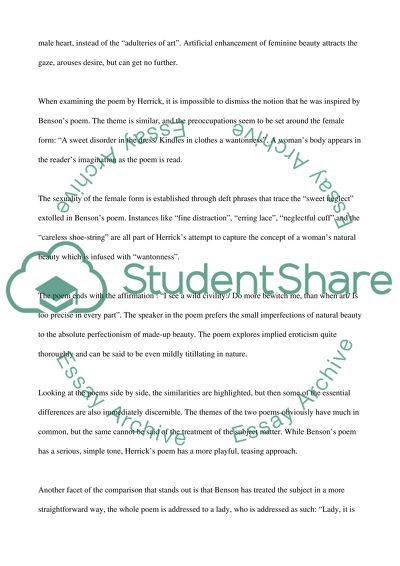Cite this document
(“Comparison of Still to Be Neat and Delight in Disorder Poems Essay”, n.d.)
Comparison of Still to Be Neat and Delight in Disorder Poems Essay. Retrieved from https://studentshare.org/literature/1533977-poetry-compare-and-contrast-essay
Comparison of Still to Be Neat and Delight in Disorder Poems Essay. Retrieved from https://studentshare.org/literature/1533977-poetry-compare-and-contrast-essay
(Comparison of Still to Be Neat and Delight in Disorder Poems Essay)
Comparison of Still to Be Neat and Delight in Disorder Poems Essay. https://studentshare.org/literature/1533977-poetry-compare-and-contrast-essay.
Comparison of Still to Be Neat and Delight in Disorder Poems Essay. https://studentshare.org/literature/1533977-poetry-compare-and-contrast-essay.
“Comparison of Still to Be Neat and Delight in Disorder Poems Essay”, n.d. https://studentshare.org/literature/1533977-poetry-compare-and-contrast-essay.


